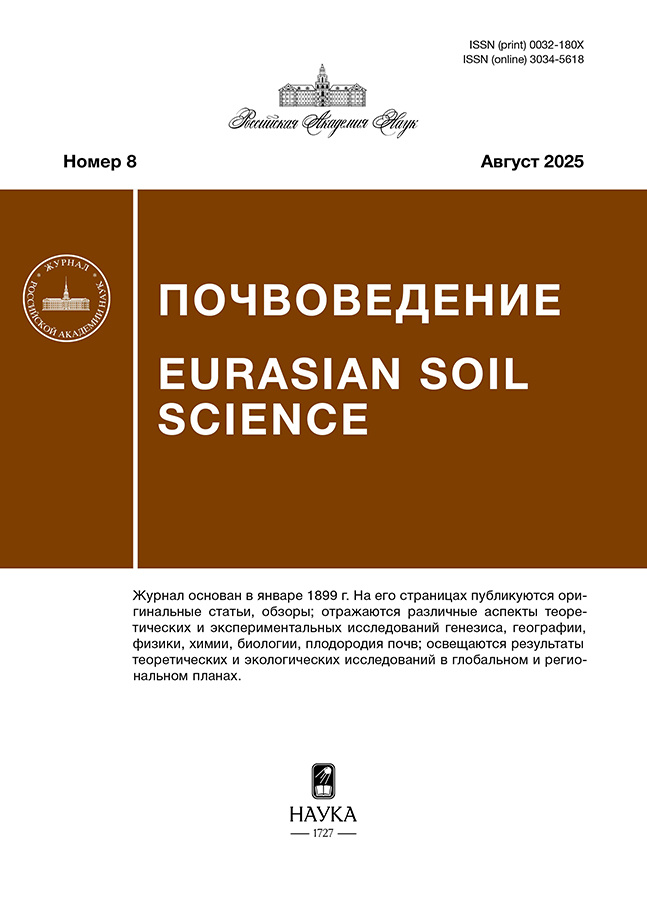Carbon dioxide emission from soils of marsh ecosystems in the south-eastern Barents Sea
- Авторлар: Bobrik A.A.1, Kazhukalo G.A.1, Bagdasarov I.E.1, Terebova E.N.2, Pavlova M.A.2, Krasilnikov P.V.1
-
Мекемелер:
- Lomonosov Moscow State University
- Petrozavodsk State University
- Шығарылым: № 8 (2025)
- Беттер: 1055–1068
- Бөлім: SOIL CHEMISTRY
- URL: https://cijournal.ru/0032-180X/article/view/688126
- DOI: https://doi.org/10.31857/S0032180X25080056
- EDN: https://elibrary.ru/INUMPD
- ID: 688126
Дәйексөз келтіру
Аннотация
The study is aimed at solving fundamental problems of soil science and ecology related to assessing the carbon balance in coastal soils and ecosystems of the Russian Arctic, as well as their functioning in a changing climate. The study estimated carbon dioxide emissions from soils of marsh ecosystems on the southeastern coast of the Barents Sea for the first time. Soils of marsh ecosystems are characterized by high values of carbon dioxide emissions (4.03 ± 0.17 g С/(m2 day), June–July 2024), which indicates their high biological activity. The analysis of data on CO2 emissions from soils of marsh ecosystems indicates mainly their high spatial variability. Soils at different levels of marsh ecosystems statistically significantly differ in the magnitude of CO2 emissions and line up in order of increasing values: wadden, beaches < littoral pools, eroded benches of the marsh < ecotone zones, lower marshes, splash zones of backflow channels (creeks) < middle and upper marshes. It has been established that lower values of CO2 emissions are observed on marshes subject to intense wind waves, which is due to the armoring role of coastal relief forms in the migration of thalassogenic matter. Despite the insignificant area of the coastal zone of the southeast of the Barents Sea, the contribution of soils of marsh ecosystems to the global flow of greenhouse gases cannot be neglected. The results of the study, obtained on the basis of statistical analysis of a large array of data, contribute to a better understanding of the role of marsh ecosystems of the western sector of the Russian Arctic in the carbon balance.
Негізгі сөздер
Толық мәтін
Авторлар туралы
A. Bobrik
Lomonosov Moscow State University
Хат алмасуға жауапты Автор.
Email: ann-bobrik@yandex.ru
ORCID iD: 0000-0001-6544-4137
Ресей, Moscow
G. Kazhukalo
Lomonosov Moscow State University
Email: ann-bobrik@yandex.ru
Ресей, Moscow
I. Bagdasarov
Lomonosov Moscow State University
Email: ann-bobrik@yandex.ru
Ресей, Moscow
E. Terebova
Petrozavodsk State University
Email: ann-bobrik@yandex.ru
Ресей, Petrozavodsk
M. Pavlova
Petrozavodsk State University
Email: ann-bobrik@yandex.ru
Ресей, Petrozavodsk
P. Krasilnikov
Lomonosov Moscow State University
Email: ann-bobrik@yandex.ru
ORCID iD: 0000-0001-7084-9972
Ресей, Moscow
Әдебиет тізімі
Қосымша файлдар













